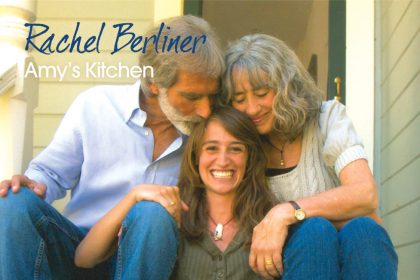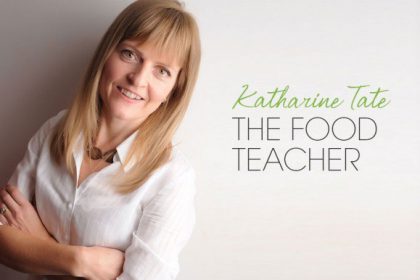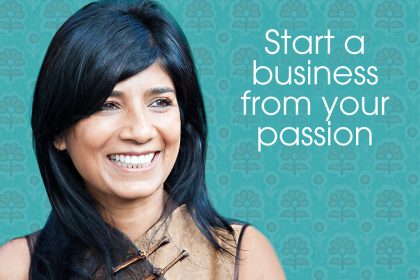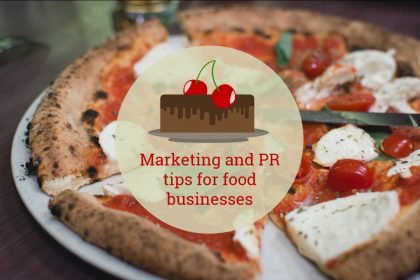How to swim against the tide and become a disruptive, challenger food brand
Struggling to establish your challenger food brand in a crowded market? Find out why you need to swim against the tide, and how to become a disruptive brand.
With so many great established brands (with big budgets) already vying for space on the supermarket shelf, it can seem daunting – if not impossible – to launch your own foodie startup.
But there’s always space for a new name, and new concept; you just need to have a sharp marketing strategy. So we asked Ian Hills from Purple Pilchard – a straight‑talking incubator agency that looks after the distinct needs of young, ambitious brands – to share advice he’s gleaned from working with more than 87 food and drink companies.
If you’re looking for a way into the food market, we highly recommend reading on!
Poor judgement and lucky breaks led me here
It’s genuinely exciting to be asked by Talented Ladies Club to write a piece about ‘disruptor’ brand thinking and share a few handy tips. It certainly took me a few editorial cuts to get down to the requisite word count, because even thinking about the title and my journey to date stirred up a fair few of thoughts and memories that I hadn’t considered for a very long while.
The first thing I must do is hold up my hand and admit that very little of what I now do was planned or premeditated. Much of what came to pass was a result of lucky breaks, poor judgement calls and outsider influences, and yet curiously today I wouldn’t change a thing.
How I lucked into the challenger food brand market
People are very good at identifying their strengths, but less so their weaknesses. I knew from very early on that corporate life wasn’t for me. Firstly in sales and latterly marketing, I discovered an environment that simply didn’t light my fire.
Stifling bureaucracy, timidity, politicking, a stubborn commitment to move like arthritic sloths and a lazy disposition to over analyse one-dimensional data all combined to make these formative years so very underwhelming.
It’s all very well studying data to determine how Brand X can sneak past Brand Y, but the real trick would have been to create a new creating a new category or drinking occasion from scratch (coconut and almond milks take a bow!)
For a significant part of my ‘blue chip’ phase I cut my teeth on largely marginalised brands with teeny tiny budgets that no-one of importance gave two hoots about. The joy of such a predicament was that few people gave a fig about what I was up to, enabling me to find wiggle room in my corporate straight jacket and express myself.
The downside of my predicament was for the most part only having access to rostered agencies who weren’t tuned to think about fringe brands with pocket change budgets. In truth their sole interest in my brand was to act as a temporary stepping stone to one of the big boy brands that resided under the same holding company’s vast umbrella.
How Ben & Jerry’s helped shape the challenger market
Of all my jobs it was Ben & Jerry’s (pre-Unilever) that provided my touchpaper moment. Here was an ‘outsider’ brand, initially based out of a portakabin in Egham that was deeply unimpressed by its starchy, corporate peers.
This was a proud, consumer-friendly brand with a light-hearted mindset; a brand that championed sincere social responsibility and wasn’t afraid to go toe-to-toe with the frumpy, arm’s length corporate brands whose financial might enabled them to flood most food aisles.
If you look at cool brands of today: Innocent, Ugly Drinks, Ella’s Baby, Karma Cola, Pip & Nut and Doisy & Dam, it’s clear to see that Ben & Jerry’s ahead-of-its-time stance provided a ‘seed of inspiration’ for these great brands of today.’
And how Ben & Jerry’s took on Haagen Dazs
At Ben & Jerry’s I learnt the importance of looking bigger than you are. Even though at the time Ben & Jerry’s was an eighth of the size of Haagen Dazs, our marketing priority was to always be accessible with an interesting quote when journalists came calling.
Haagen Dazs like most of their corporate peers always opted for bland, monotone soundbites. In stark contrast, Ben & Jerry’s was only too happy to respond with a whimsical quote, a wry observation or a gentle dig at Haagen Daz’s expense.
And here’s the rub of the green: if your Goliath rival chooses to ignore what you have to say, that underpins the arrogance of ‘big business.’ And yet, if that same monolith retaliates and throws its weight around, that’s deemed bullying. In essence fledgling brands have unrivalled scope to express themselves.
In a world where Haagen Dazs offered cinema, radio and TV advertising, Ben & Jerry’s offered the Veals on Wheels taxi fleet, the Flying Freisan scoop bus, The Friends of The Girth protest group and the sponsorship of five obscure yet genuine World Championships (bog snorkelling, gurning, conkers, nettle eating and toe wrestling). Haagen Dazs never learnt that market leadership is no excuse to take your foot off the pedal.

Nine tips for challenger food brands
Since 2004 I have worked with in excess of 87 food and drink companies. My focus is acting as an incubator agency for the cash-strapped, great brands of tomorrow. Most things have gone well, some exceedingly well and yes there have been a few crash and burns as well. For what it’s worth here’s a short list of top line observations that have served me well.
1) Try to be upbeat and enthusiastic in all you do
Consumers need a reason to question their daily routines and an opportunity to tap into your positive energy will encourage them to broaden their horizons.
2) Be willing to rip up the rule book
Paul and The Great British Biscotti crew felt that a thriving frothy coffee movement meant that the time was now ripe for a biscotti renaissance. They refused to acknowledge, however, that Naples should remain unchallenged as the spiritual home of this noble dunker or that almonds were the only flavour profile worthy of consideration.
There was also the small matter of whether accompanying coffee was this biscuit’s only true calling in life. Paul’s answer was to celebrate the lost art of dunking, create the world’s first tea centric biscotti and most interestingly of all create a savoury portfolio capable of accompanying salads, soups and cheeseboards.

3) Fuel local pride
The Handmade Company was a highly successful independent provider of great cakes, traybakes, cold desserts, cheesecakes and gluten-free treats that lacked any local warmth whatsoever. So I encouraged the top team to establish some local pride via a ‘Baked in Berkshire’ strapline.
In the same vein, Beckleberry’s is a proud family business (sorbets, ice cream and patisserie) launched from ex-colliery engineer (Ian used his final redundancy pay out. Ian and his son Peter were adamant that they wanted a business that made something tangible, builing on the region’s proud manufacturing traditions, which is why their new brand identity now includes a ‘Gourmet with a Northern Soul’ sign off.

4) Take inspiration from anywhere
Cotswold RAW is a BARF pet food pioneer looking to find ways to overcome the public’s natural anxiousness associated with serving a ‘nutritionally dench’ food format historically accused of spreading salmonella and e-coli. The humble banger provided the inspiration for the world’s first raw ‘dog sausage,’ creating a food format that was easier to handle and serve.

5) Use hierarchy of messages and meaningful collaborations
Over in North America, Nature’s Path stands tall as the largest independent provider of organic and gluten-free breakfast cereals. Over the pond, organic was always the primary call to arms and yet, when the range arrived in the UK, our country was in deep recession so organic sales were dwindling fast.
I convinced the US team to give us country-bespoke packaging where ‘free from’ became the primary message, which tied in neatly with a blossoming gluten-free movement in the UK. A second decision to align ourselves closely with the Coeliac UK charity which helped us to circumnavigate much of the animosity traditionally saved for overseas brands seeking to take a significant slice of our local marketplace.

6) Challenge the status quo
Made for Drink (Chorizo Bites and Duck Fritons) and Olly’s Olives are two artisan snacks that simply refused to accept why potatoes and nuts should always be the ‘go-to’ snack in your local pub. To their mind, old-school crisps and peanuts unwittingly suppress one’s taste buds.
Surely these brands concluded, a great snack should accompany not overpower your drink of choice, be that a pilsner, a real ale or a fine wine?
7) Find your story
Big companies tend to be run by faceless souls wearing invisibility cloaks. The public loves a vocal underdog with a touching story to tell. Maybe you gave up a lucrative City career, maybe you took a stance to improve your kid’s lunch box or maybe you’re a committed amateur sportsman looking for a pocket-sized, ‘clean deck’ snack that gave you a competitive edge… whatever your motive, consumers love an ambitious tale of daring-do.
8) Unleash the power of words
One of my biggest bugbears is that brand owners will pay a fortune for great design but not great copywriting; mistakenly assuming they can bundle some words together themselves. Marketing is essentially storytelling and there’s also a reason why only a small portion of the population are published authors.
9) Don’t be afraid to ask questions
My final point is probably the most important. Never be afraid to ask questions of your peers. The world of challenger brands is a populist huddle where victorious brand custodians are only too happy to share best practice and top tips.
We live in a country where tenacious underdogs will always be applauded and appreciated and there’s always so much we can learn from each other. Disruptor marketing isn’t rocket science it’s a state of mind that simply provides you with the freedom to be mischievous.
Learn more about starting a food business
Love to read more about turning your passion for food into a business? You’ll find more advice in these articles:
- How to test your food business idea without quitting your day job
- Want to make money out of your family’s secret recipe? Here’s how
- Interview with Ella’s Kitchen founder Paul Lindley
- How Claudi & Fin got their lollies into UK supermarkets
Ian Hills is the Founder of Purple Pilchard, a straight‑talking incubator agency that looks after the distinct needs of young, ambitious brands of tomorrow, providing meaningful, ‘breakthrough moments’ in an increasingly cluttered FMCG marketplace.










